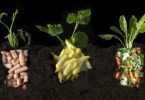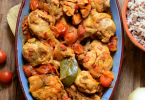The British Table
A New Look at the Traditional Cooking of England, Scotland, and Wales
The British Table: A New Look at the Traditional Cooking of England, Scotland and Wales by Colman Andrews (Abrams) and the image credits: © 2016 Hirsheimer & Hamilton.
Link to to website for readers to purchase the book:
http://







